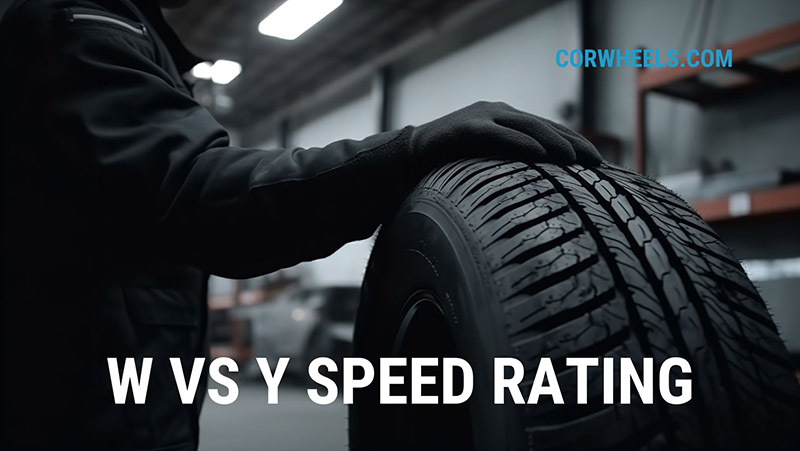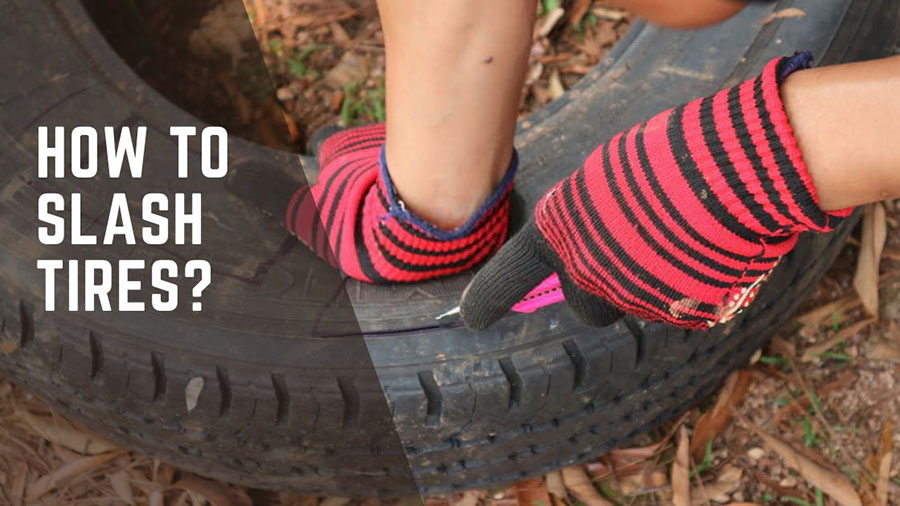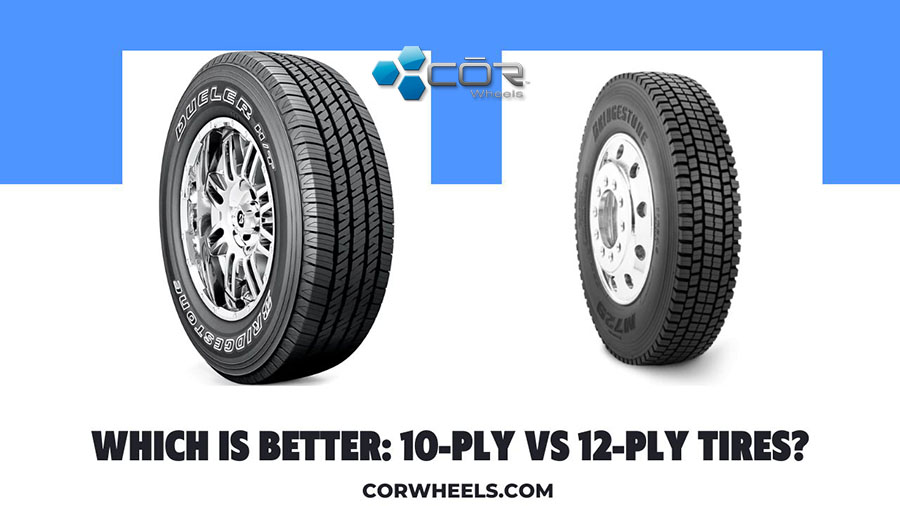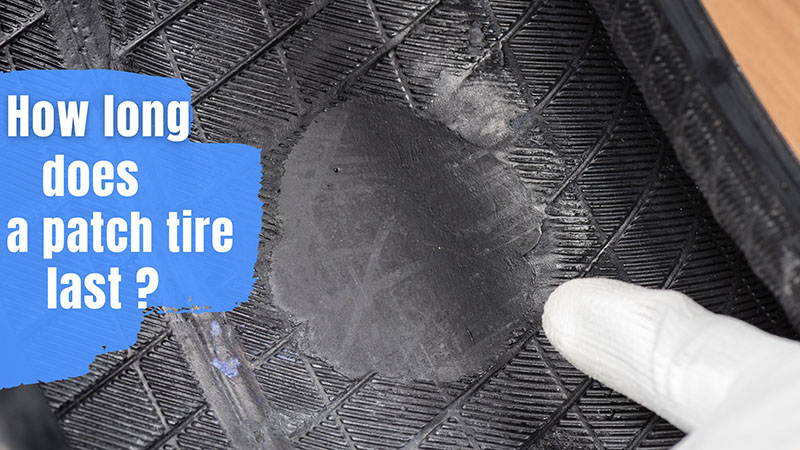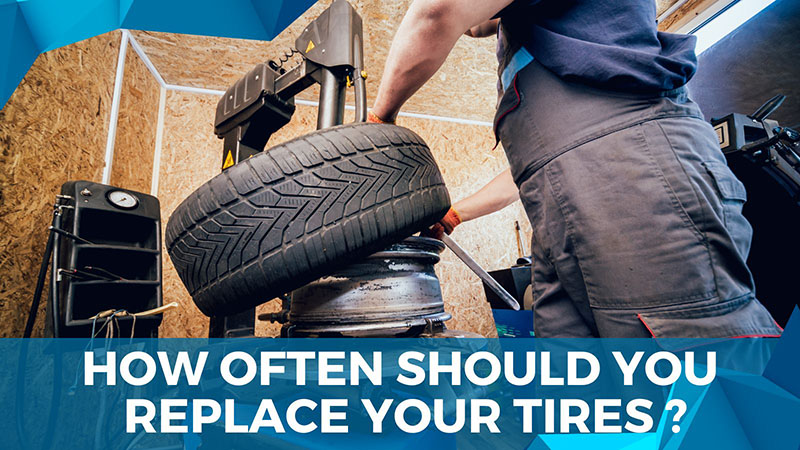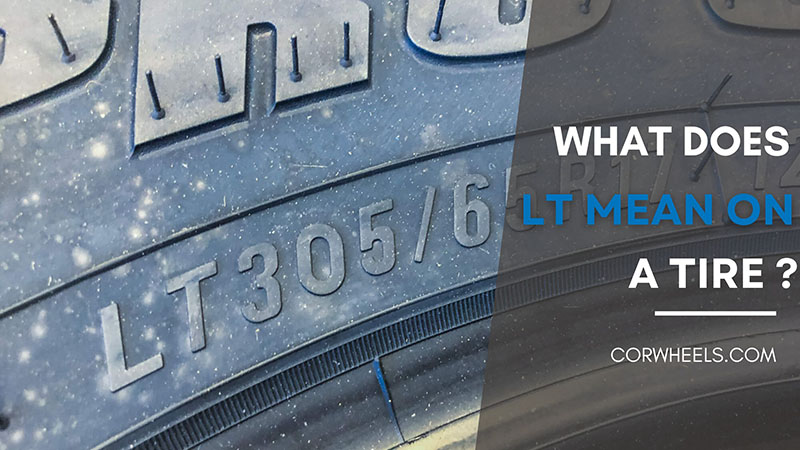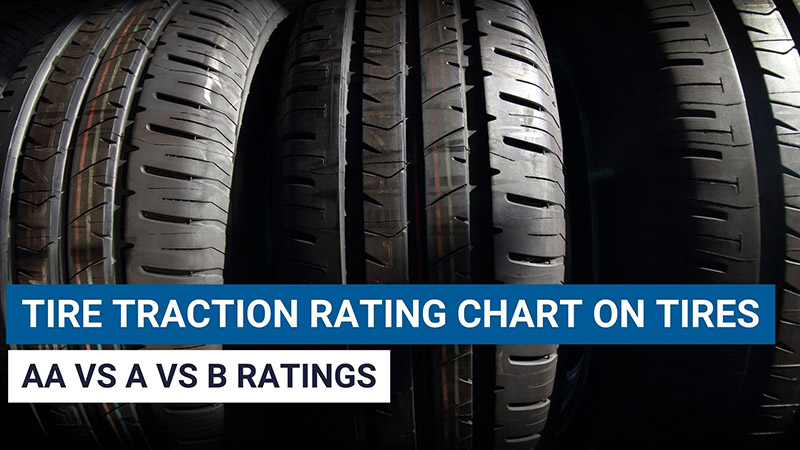When it comes to choosing tires, understanding the different speed ratings is essential to ensure optimal performance and safety. Two common high-performance speed ratings are W and Y. While these ratings may seem similar, there are important distinctions between W-rated and Y-rated tires that can impact your driving experience.
In this article:
What Is Y Speed Rating?
The Y rating is typically seen on high-performance and ultra-high-performance tires for sports cars, luxury vehicles, and supercars. It signifies that the tire can safely handle speeds up to 186 mph or 300 km/h.
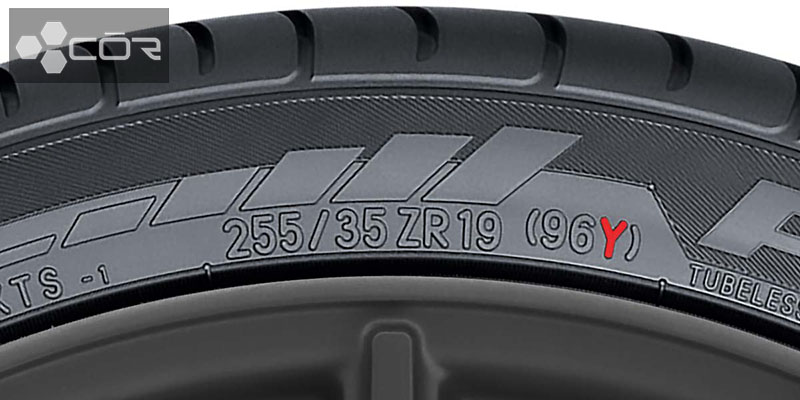
Tires with a Y speed rating undergo rigorous testing to ensure their durability and stability at high speeds. The construction and materials used in these individual tire models are engineered to provide enhanced grip, precise handling, and optimal performance, even under demanding driving conditions.
It’s important to note that the Y speed rating is not suitable or necessary for everyday city driving or standard vehicles. However, for those who own high-performance vehicles or enjoy pushing the speed limits on the track, tires with a Y speed rating offer the assurance of safety and performance at higher speeds.
What Is W Speed Rating?
Performance tires made for high-performance automobiles like luxury sedans, fast coupes, or sports cars often have a W rating. It means the tire can rev up to 168 mph (270 km/h) without sacrificing traction or experiencing any problems.

Like Y-rated tires, W tires go through extensive testing to ensure their performance and toughness at high speeds. These tires have unique components and features that increase grip and handling control.
It’s crucial to remember that performance and safety can be affected by using tires with a lower tire speed rating than what is advised for your vehicle. Therefore, if you own a high-performance car or enjoy spirited driving, selecting tires with a W speed rating can provide the necessary performance and peace of mind.
W And Y Speed Rating: Which Is Better?
Y-rated tires are superior in terms of max speed, but they are more expensive with a shorter tread life as a trade-off. If you are frequently involved in high-speed driving, Y speed rating is the better choice. Otherwise, W-rated tires offer greater value for the money.
Durability
A tire’s softer rubber compound becomes softer as the speed rating increases. And a tire with a higher speed rating tends to last shorter than one with a lower speed rating because of enduring more the friction and heat of continuous high-speed rolling correlates with its speed rating. Quicker wear and tear with softer compounds are expected.
The tires rated Y are more concentrated and specifically designed for performance driving, which typically means they are less effective for daily tasks. Although there isn’t much of a difference between the two ratings, which is less than 20 mph, the distinctions may still be seen.
Ride Comfort Level

Focused tires sacrifice a lot of the qualities that make strong all-around tires. Therefore, the majority of high-performance, high-speed tires aren’t the best in terms of refinement, ride quality, and noise. Additionally, the larger profile of high-speed tires tends to increase drag and noise levels on the road.
Therefore, a tire with a W speed rating ought to be a little more pleasant than one with a Y speed rating, but it all depends on how well each specific tire type works. If two similar models were compared, the only distinction was the speed rating. A tire with a lower speed rating would probably be the more pleasant option.
Performance
Their performance in dry conditions are comparable, though, as mentioned Y-rated tires might wear down faster. So let’s talk about how they perform in winter.
High-performance tires are created to survive extreme heat without deforming, and winter tires are built to withstand low temperatures. Therefore, regarding driving conditions in the winter, a tire with a W speed rating should be preferable. Even if these changes aren’t very significant, they can nevertheless be felt when one is close to losing edge of traction.
Handling Ability
Because it was created with a more specialized approach in mind, a Y speed-rating tire can handle better than its counterpart. Even the smallest steering adjustments while traveling at over 150 mph can significantly alter the amount of heat a tire experiences. Better heat resistance typically translates into much better management of the tire’s performance peaks.
As a result, a tire with a Y speed rating can handle better than one with a W speed rating. Again, other aspects can affect a tire’s handling. When two tire models with the same specifications were compared, the tire with the higher speed rating would probably have better handling characteristics.
Cost
It’s not always the case that a greater speed rating translates into a higher cost. However, since Y and W speed-rated tires are considered at the top of the range, they are less common than, say, H-rated tires. W tires are typically found on sports automobiles, exotic vehicles, supercars, and expensive luxury vehicles.
As a result, these are usually more expensive. We can observe that the Y-rated tire often costs slightly more when comparing the two. Since there aren’t many conventional cars that can exceed 300 kph or 186 mph, the Y tires are usually typically reserved solely for supercars and hypercars.
When To Use Which Tire?
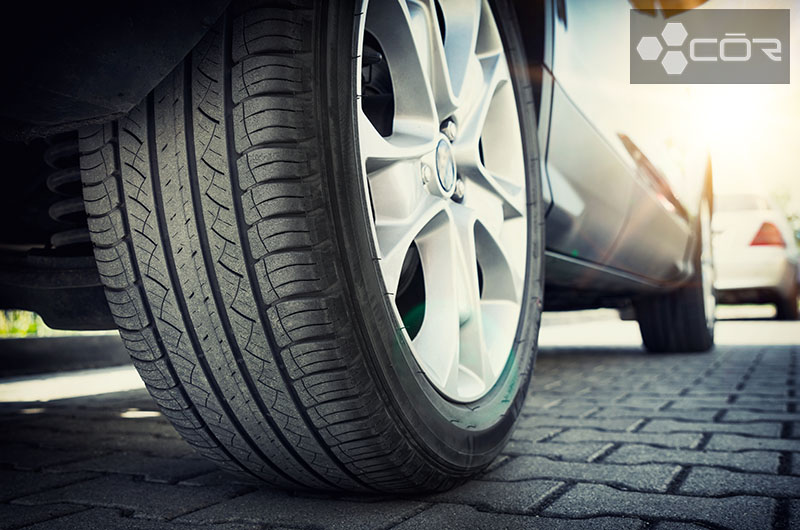
Both W and Y rated-tires are designed for high-performance vehicles and offer exceptional capabilities. So here is what I noticed after experiencing both of them.
When you drive in areas with challenging road conditions or participate in track days or performance events, W-rated tires can withstand the demanding nature of aggressive driving. They offer the necessary durability and performance for such situations.
If you own a supercar or a high-end sports car capable of reaching or exceeding speeds of 186 mph or 300 km/h, Y-rated tires are recommended. They are designed to deal with the highest performance demands and maintain stability at extreme speeds.
When selecting tires, remember to consider other factors such as tire brand, model, construction materials, and tread pattern.
Frequently Asked Questions
Can You Mix Y And W Speed Rated Tyres?
No, never use tires with various speed ratings on the same vehicle. Your car’s handling will be severely hampered as a result. No matter which axle is driven when an automobile has various speed ratings, the slower tires should be fitted on the front axle.
Can I Use Y Tires Instead Of W? What Will Happen?
No, it is not recommended to use Y tires instead of W tires. Y tires have a higher maximum speed capability than W-rated tires. Using Y-rated tires instead of W-rated ones may compromise the vehicle’s performance and safety, as the parts may not be meant for the specific speed and the tire load requirements.
Are W-Rated Tires All Season?
No, W-rated tires are not specifically categorized as all-season tires. The designation of all-season tires is separate and indicates the tire’s performance in various weather conditions, including dry, wet, and light snow. While some W-rated tires may also be all-season tires, it is not a characteristic inherent to the W rating itself.
The Bottom Line
The choice between W and Y speed-rated tires depends on your specific driving requirements and the capabilities of your vehicle. While both ratings indicate high-performance capabilities, Y tire code items offer a slightly higher maximum speed capability.
However, for most daily driving scenarios, W-rated everyday tires provide more than enough performance and are a popular choice among enthusiasts. Consulting with tire engineers or professionals can help you make an informed decision based on your specific vehicle and driving preferences.

